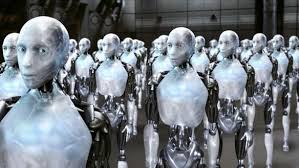Growth Of Artificial Intelligence

By Anubhav Rai May 19, 2023
Artificial intelligence (AI) is the term used to describe software-coded heuristics that simulate human intellect. These days, this code may be found everywhere, from consumer apps to embedded firmware to cloud-based enterprise applications.
Through extensive use of applications of the Generative Pre-Training Transformer, AI entered the mainstream in 2022. The most often used programme is ChatGPT by OpenAI. In the perspective of the majority of customers, ChatGPT has become associated with AI due to its broad fascination. However, it only reflects a small percentage of the current applications for AI technology.
In artificial intelligence, an objective is achieved by reasoning and taking actions that have the greatest probability of success. Computer programs can automatically adapt to new data using machine learning, a subtype of artificial intelligence. By ingesting unstructured data, including text, photos, and videos, deep learning algorithms allow for autonomous learning.
The Indian Artificial Intelligence Industry: A Synopsis
The concept of artificial intelligence (AI) refers to the modeling of human intellectual functions by machines, especially computer systems. There are many AI applications, including expert systems, machine learning, natural language
processing, speech recognition, and machine vision.
As a country that transitioned from a paper-based to a digital presidency during the epidemic, India brings expertise and expandability to Al’s execution. As plentiful as humans are in India, data is as well.
With the advent of modular UPI transactions as well as DigiLocker, AI projects have seen a rise in penetration. Across all industries, Al’s “Indian Secret Sauce” applies technology horizontally to automate intelligently, speed up production, resolve conflict, and more.
What are the 4 types of AI?
Reactive AI uses algorithms to generate the best possible results from a set of inputs. The AI used to play chess, for example, is a reactive system that optimises the winning strategy. AI that reacts to new circumstances is often somewhat static and cannot grow or adapt. Therefore, it produces the same output given the same inputs.
Limited memory AI can update itself based on new observations or data or adapt based on past experience. Typically, updates are few and far between, thus the name “limited updating”. For instance, autonomous vehicles have the ability to “read the road” and adjust to unusual circumstances, even “learning” from prior mistakes.
Theory-of-mind AI are completely adaptable and has a wide range of learning and memory capabilities. These AI kinds include sophisticated chatbots that could pass the Turing Test and deceive a person into thinking it was a real person. However, these AI aren’t self-aware and are remarkable.
Self-aware AI as their name implies, become aware of their own existence. The concept of an AI developing consciousness or “life” is considered science fiction by some professionals.
What is the future of AI?
In the future, AI is expected to have a major impact on technology due to its vast potential and applications. When compared with humans, AI has the advantage of being completely repetitive, and able to perform detail-oriented tasks with a very small margin for error.
Artificial intelligence is expected to bring about a new industrial revolution. Machines will take care of all repetitive tasks through artificial intelligence, leaving humans to make critical decisions. In the future, artificial intelligence is expected to be incorporated into our daily lives since it can be replicated anywhere.
Comparatively to other developed tech-based economies like the US, Indian AI companies are still at a nascent stage, but India is expected to have 100 AI startups by 2025. As per Accenture, AI has the
potential to add $957 billion or 15% to India’s GDP by 2035, mostly through industrial automation, manufacturing automation, and corporate digital transformation.
Due to the large IT talent pool and high graduate population in India, artificial intelligence companies have a lot of potential.
This is the best time to invest in artificial intelligence stocks in India.
What are the real-world applications of AI?
Many AI-based bots currently in use are what we refer to as “weak” or “narrow” AI, which is mostly rule-based and has a constrained range of capabilities. A collection of commands, for instance, may only be given to Siri or Alexa in a particular order and in a certain language; otherwise, it won’t understand them and your task won’t be finished.
Even said, AI constantly updates itself in accordance with two rules: either manual inputs or the algorithm, which is constantly updated and modified based on the data provided into it. This is what “machine learning” entails.
Growth of the artificial intelligence market in India
Around 76 billion people live in India, one of the nations with the greatest populations of internet users. Government initiatives, novel applications, commercial innovation, and investments could help India reach this level. The market for artificial intelligence is expanding quickly along with the rise in internet users. The Indian AI market was worth $680.1 million in 2022. This market is anticipated to reach $3,935.5 mn by 2028, with a CAGR of 33.28% between 2023 and 2028, according to the International Market Analysis Research and Consulting Group (IMARC).
In the Union Budget 2023, Finance Minister Nirmala Sitharaman made the suggestion that India should not only concentrate on “Make AI for India,” but also “Make AI work for India.”
Hii, my name is Anubhav and i work at stockDaddy as a content writer. If you also want to learn about stock market then you can start your journey with any stock market courses.
articlebiz.com







No Comment